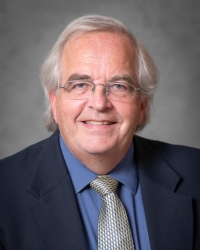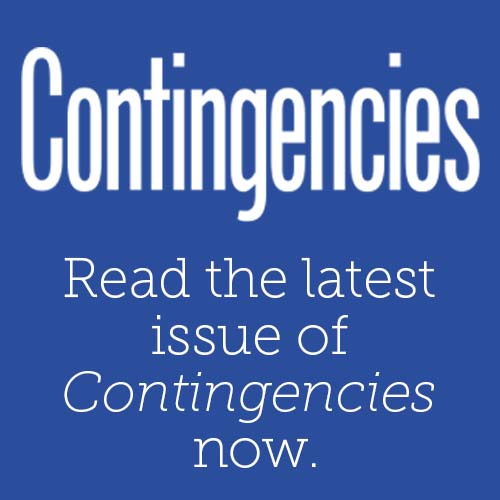Explaining Professionalism to Principals
The Committee on Professional Responsibility (COPR) published Explaining Professionalism to Principals last fall. Actuarial Update sat down with the authors of the paper—Nancy Behrens (NB), Brian Donovan (BD), Geoff Sandler (GS), and Karin Swenson-Moore (KSM)—who offered some background and explained how it can help actuaries.
What inspired you to write this paper, and how do you think it can help actuaries?
KSM: This paper was inspired by some real-life experiences of several of us on the committee, who had times when we were challenged on our work and felt somewhat uncomfortable with how that conversation went. We wanted to provide tools and discussion points to help actuaries explain what professionalism means to their peers and colleagues, particularly to those who are not actuaries.
NB: In a more competitive world, we are hearing more from actuaries about the pressure they’re under. Actuaries need to be able to talk to their bosses—whether they are actuaries or not—about the standards to which actuaries are required to adhere. I hope the paper will make actuaries feel more comfortable raising the issue and explaining the rules that they need to follow.
GS: Not everybody is familiar with professionalism concepts and has talking points at their fingertips. We need to be able to communicate our professional standards not just within the profession, but externally, so that the public understands that we are professionals.
How can actuaries explain the importance of professionalism to a principal who isn’t an actuary?
NB: At a recent professionalism seminar, someone talked about sitting in a room with professionals from different areas and actually pulling out her Code of Professional Conduct and saying, “Well, here’s why we have to do it this way—our Code of Conduct says this…” It’s a great example of someone taking the time and being brave enough to pull out the Code and say, here’s what we’re required to do in this situation.
KSM: Our intent was to make this paper something that would help actuaries prepare for that conversation. The actuarial professionalism toolbox lists the Code of Professional Conduct and all the different tools that have been developed over the years, including actuarial standards of practice (ASOPs) and the request for guidance process run by the Actuarial Board for Counseling and Discipline (ABCD). The toolbox, as well as the case studies, provide a framework for that conversation.
GS: We also need to be able to articulate the elements that go along with being a profession. This is especially important for the actuarial profession, which is self-regulated. A previous COPR paper stated that in the actuarial profession, self-regulation takes the form of establishing and maintaining rules for admission to the professional organizations, including basic education and work experience, as well as continuing education requirements; a code of professional conduct; qualification standards and standards of practice; and rules addressing how and when members may be counseled, disciplined, or removed from professional memberships. It’s important for non-actuaries to understand that actuaries adhere to these professional standards so that our clients, our employers, and the general public have confidence in what we do.
I’d like to hear about a time in your own careers when you had one of these conversations.
BD: A few years back, Florida got hit with a significant storm that pierced reinsurance layers, so we had to tell the reinsurers that they lost money. Of course, it takes time for these things to develop, and several of the reinsurers pushed back on the projection, saying we were wrong. I had discussions with my non-actuarial senior management, laying out “here’s what I believe, why I believe it.” After the discussion, I had the support of senior management, and we pushed back on the reinsurers. That’s a perfect example of going to non-actuarial senior management, laying out all the assumptions, explaining why you say what you say, and then having their support to insist on the right number.
NB: An actuary who worked for me was under a lot of pressure from a pricing standpoint and was looking for my support. He walked in with a copy of the ASOP and a copy of our procedure manual and said, “When you put these two side by side, you can see why I have to do what I have to do.” As supervisory actuaries, we need to back up the actuaries who report to us and make sure they are supported and protected in following the standards.
KSM: In the early years of the Affordable Care Act, my company was participating in the small group health insurance market. We saw some competitors’ rates were lower, and our salespeople were unhappy. We had to defend our position, relying on our professional standards. It took some time for the claims experience to fully emerge, but because of those early decisions, we had smaller rate changes in subsequent years. Those same salespeople who complained about our rates being uncompetitive later thanked us for stable rates, because that was better for our customers and the market.
If there was one thing you want people to take from this paper, what would it be?
KSM: That actuaries have tools available to support them in their practice every day, whether they’re a solo actuary or work in a huge department.
BD: There’s not one correct answer for any actuarial endeavor, and different actuaries can easily come up with different answers. That’s why it’s extremely important to have that documentation to be able to lay it out:—“This is my assumption, here are my selections”—and be able to explain why your work is in compliance with the ASOPs and Code. If you have questions, it’s helpful to get peer review or guidance from the ABCD. At the end of the day, assume you’re going to be challenged and make sure you can show why your number is justified.
GS: It’s easy to take for granted the importance of the Code and ASOPs because we live with them every day. But you need to be able to articulate them to people who aren’t that familiar with them so that they understand that we live in a professional environment.







